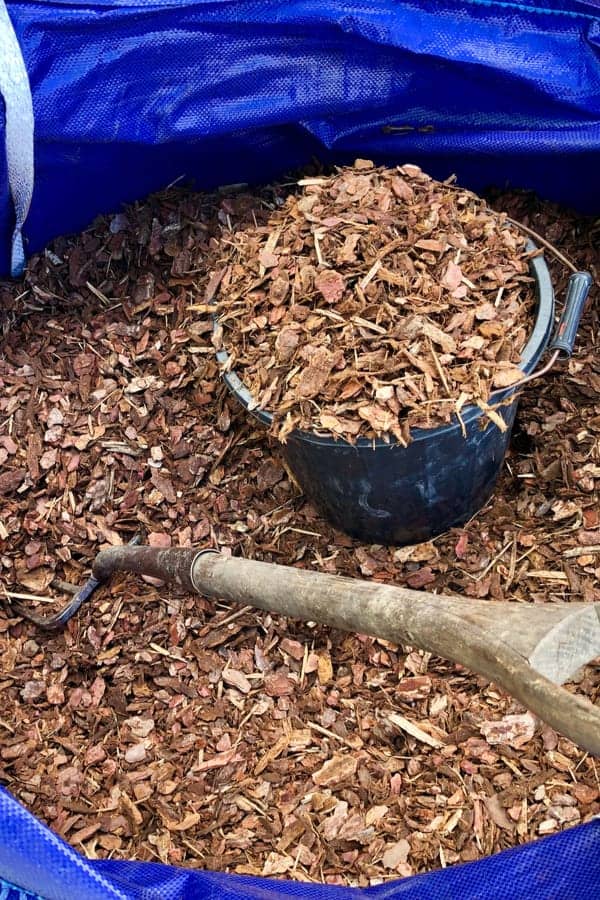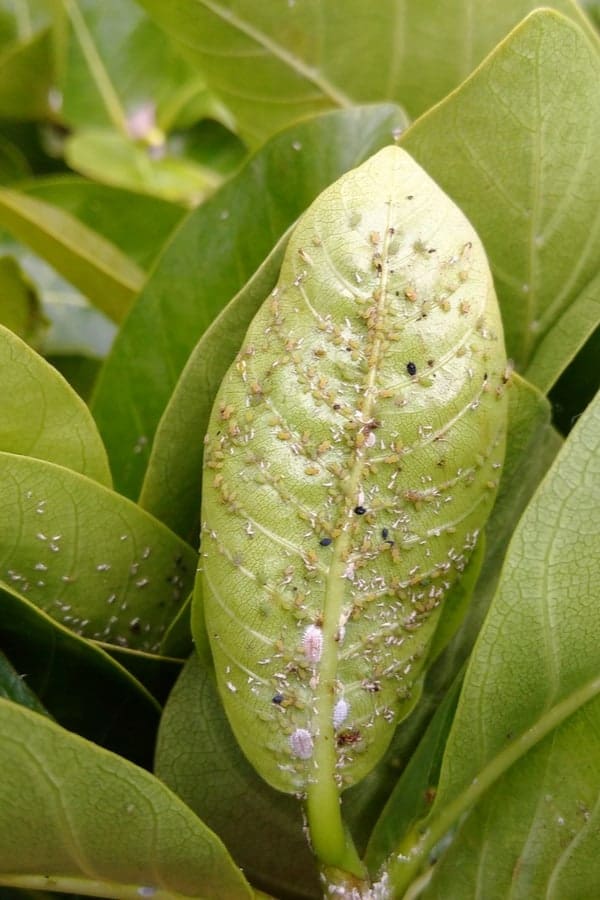The first description of Gardenias dates from China, in the 1700s. Since then, gardeners have grown it as a beautiful evergreen shrub, a tree, or a dwarf form in a pot. They are well-known for beautiful, highly fragrant white or yellow flowers and glossy, deep-green foliage.
Many people avoid this fantastic flower because it is considered a plant difficult to grow. However, if you provide the necessary conditions it requires, you can expect abundant blooming which will make your home a scented paradise.
How to Plant Gardenia Outdoors in Your Garden

Find the right place with full sun and partial shade for your picky flower. Start planting it in spring or autumn while the temperatures are moderate.
It is always better planting it in spring if you live in the North, to allow well rooting before colder weather comes. You can’t expect first flower buds while the temperatures during the day are below 70 F (21 C) and about 60 F (15.5 C) at night.
Take a small garden hoe and dig a hole, at least twice as wide and deep as the root ball of your seedling. Add some compost on the bottom if necessary and at least 3 to 4 inches (7.6 – 10 cm) of the soil, and place your Gardenia in it.
Add half of the soil needed and water it to help the elimination of air pockets. After the water drains, fill the hole, but keep in mind that this flower needs the top of its root ball stays above the surface of the ground.
The average height of this plant is from 3 to 8 feet (91 cm – 2.4 m) with an equal width. Therefore, you should take care to leave 3 to 6 feet (91 cm – 1.8 m) between the plants when deciding to plant a few of them. Too close planting may lead to overcrowding, poor airflow, and competition for nutrients and water.
Repotting Gardenia

Don’t expect your Gardenia outgrow its pot if growing it indoors, especially if you choose the dwarf variety. The reason is that they won’t grow more than 6 to 24 inches (15 – 61 cm). Therefore, you shouldn’t re-pot it unless the plant’s roots entirely fill the pot or when you notice them growing through the drainage holes.
If you decide that it is necessary for moving the flower into the bigger pot, do it in the late spring at the moment when the dormant state ends. Fill the container with the well-draining, peat-based ground, and gently place your plant in it. Keep watering regularly with a watering can.
How to Care Gardenia in Your Garden
Space
Keep in mind that those plants are highly sensitive and they will have problems if relocating too often. Once you find the right place, avoid moving this flower except at the end of the growing season.
While your Gardenia grows outdoors during summer, it will need enough sunlight and the excellent circulation of the air without direct drafts.
On the other hand, it will need adequate heating during colder days after you move it indoors, as well as an appropriate level of humidity. Maybe you should think about a bathroom as an ideal place for your plant to overwinter.
Soil
Well-drained, humus-rich soil will be perfect for your Gardenia. However, unlike other plants, this flower has some specific needs. Make a quality mix of peat moss and a little bit of acidic (ericaceous) compost. This compost is crucial for keeping the pH range from 4.5 to 6.0 and making the soil acidic.
You can purchase it online or make your own by combining regular garden soil with mature compost, coarse sand, and perlite.
Adding this mixture is important since the pH level of the ground changes over time as a result of regular feeding and watering. Check the pH regularly. That will prevent changes such as stop flourishing, fall off the foliage, or yellow color of stems and leaves because the soil has become alkaline.
The old method of rising the acidity of the ground is watering this flower with diluted vinegar once a month. Leftover tea, pickle juice, or coffee grounds can be helpful as well.
Don’t forget that Gardenia you have bought is already in the correct soil. Therefore, you shouldn’t re-pot it until you see roots coming out from the pot.
Light

Provide at least 4 to 6 hours of sunlight a day for your Gardenias. That is the primary requirement for abundant flourishing. However, it is an excellent idea to choose the place with partial afternoon shade during hot summer days.
If you grow Gardenia indoors, place a pot on a southeast windowsill to provide enough sun for your plant from the early morning. This window is perfect during winter.
However, you should put the pot in the corner where it can get some shadow in summer if you decide to grow your plant indoors throughout the year. If the level of brightness available is not sufficient, you should add some artificial source of light.
Temperatures

The ‘wrong’ temperatures, especially those above 75 F (23.9 C), may cause dropping the buds. Therefore, you should provide the average temperatures of 68 to 74 F (20 – 23 C) during a day and at least 60 F (15.5 C) at night.
Also, avoid drastic temperature changes if possible. Since Gardenia is a sensitive plant, sudden chances may cause wilting flowers and leaves.
Watering

Gardenias won’t tolerate dry soil, so you should keep watering your plant regularly. Otherwise, it will stop blooming.
Well-drained soil needs to be moist but not soggy. Decrease the level of watering in winter, and water your plant only when the top 0.5 inches (1.3 cm) of the ground becomes dry. On average, your plant will need approximately 1 inch (2.5 cm) of water a week.
Don’t forget that this flower can’t stand wetting the foliage. Also, avoid too crowded planting because Gardenia requires proper airflow. Be careful during watering to prevent fungal diseases.
Misting

Like most tropical plants, your Gardenia needs a high level of humidity (about 50 to 60%) to thrive. Everyday misting is necessary, but you should avoid direct contact with the buds and blooming to prevent discoloring.
Misting is essential in winters while heating your house. You should repeat it at least two times a day during these months. Don’t forget to let leaves dry before next misting.
If it is too complicated for you, there is a simpler solution. Place a humidifier near the pot, and your plant will get necessary humidity. I prefer putting a pot with my Gardenia in a drainage bowl filled with 1 inch (2.5 cm) of coarse gravel and water. If you want to try this method, make sure that the bottom of the pot doesn’t touch the surface of the water.
Fertilizing
Since Gardenia is an acid-loving plant, using acid-based, slow-release fertilizers is an ideal option for it. Feed your plant at least once a month, but you should do it less frequently during winter.
Since this type of fertilizer is specific, always follow the directions from the label before starting applying it. Selecting 15-15-15 fertilizer is always an excellent choice.
It is a good idea to dilute the fertilizer because under-fertilizing is a better option than applying too much of it. Exaggeration may harm your delicate flower.
Mulching

Put a generous layer of mulch on the top of the soil to keep the roots of your Gardenia moist, but never too wet. Peat moss will always be an excellent choice because it helps in increasing the necessary level of humidity.
Adding sawdust or woodchip will add some acid to the ground, which will encourage the vigorous and healthy growth of your flower.
Pruning and deadheading

Gardenia usually keeps a lovely, uniform shape for a long time. You may prune it when branches start growing and protruding too much, which compromises the form of your shrub.
You should cut off old, woody stems since the buds can form just on the new ones. However, be careful with pruning if you want your flower to bloom on time.
It is also preferable to deadhead withered blossoms from time to time. That way, you will encourage healthy new growth of your plant and more abundant flourishing.
The best period for this activity is after full flourishing. Keep in mind that your Gardenia may not bloom the following year if you wait too long to start pruning.
Gardenia Flower Planting Possible Problems
Problems with blooming

- Blooms don’t open – The possible reasons are the inadequate pH or the temperatures. Solve the problem by adjusting the soil and moving your plant indoors when the temperatures decrease below 60 F (15.5 C).
- No blooms – It will happen after too late pruning.
- Bloom drop – It happens when you move your plant right before it starts blooming.
- Bud drop – An inadequate watering or lack of sunlight are the most common reasons for dropping the buds. However, some pests can cause it as well.
Problems with yellow leaves

- Temperatures – If you don’t move your Gardenia indoors when the temperatures drop under 60 F (15.5 C), you can expect to see yellow leaves all over the shrub. If you leave it in the garden, you can expect the plant die out eventually.
- Soil – Your plant will start yellowing when the pH of the soil becomes alkaline. Also, Gardenia will start suffering when the ground is not well-drained and stays soggy most of the time. As a result, you will see its leaves turn yellow.
Problems with brown leaves

- Watering – If you splash the foliage while watering your plant, you can expect the occurrence of the brown spots on it. Over time, the foliage will turn brown and fall off.
- Soil – When the pH of the ground is not acidic enough, or the drainage is poor, your plant will suffer from so-called ‘wet feet,’ and you can see the foliage turns brown.
- Sunlight – Always keep in mind that your Gardenia needs at least six hours of sunlight a day. If it doesn’t get enough sunlight, you will face brown leaves.
- Humidity – It is not rare that Gardenia when growing indoors has problems with lack of humidity. If that happens, its leaves will become brownish.
- Pests – Some pests will cause the problem with browning the foliage as well.
Gardenia Flower Pests and Diseases
Two-spotted spider mites

It is not easy detecting these tiny arachnids until it is too late, and the population becomes too large. They are placed on the underside of the leaves and feed on the plant juices.
The result is yellow or white speckles on the foliage, which becomes distorted over time. Remove infected leaves immediately and use plant-based miticide to get rid of these creatures.
Sooty mold

Once appears this gray, fuzzy mold will cover the foliage of your Gardenia. The only thing you can do to get rid of these pests is to use insecticidal soap.
Aphids

These insects suck fluid from the stems and the foliage of Gardenia shrub and stunt its growth. If you spot clusters on stems, buds, and on the underside of the leaves, spray your plant with an insecticide right away.
If left untreated, these creatures will cause the occurrence of curled and distorted leaves and reduce blooming.

Leave a comment